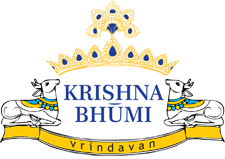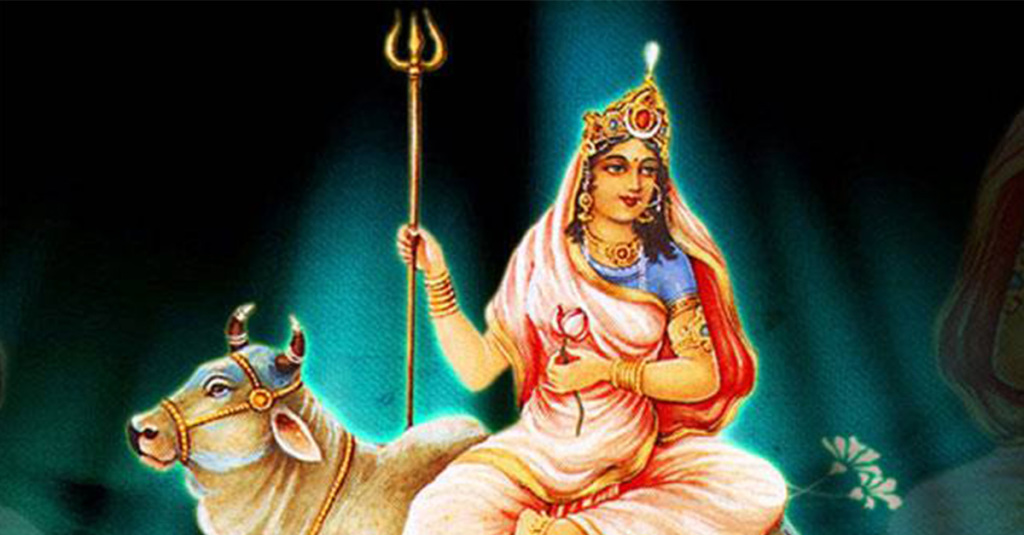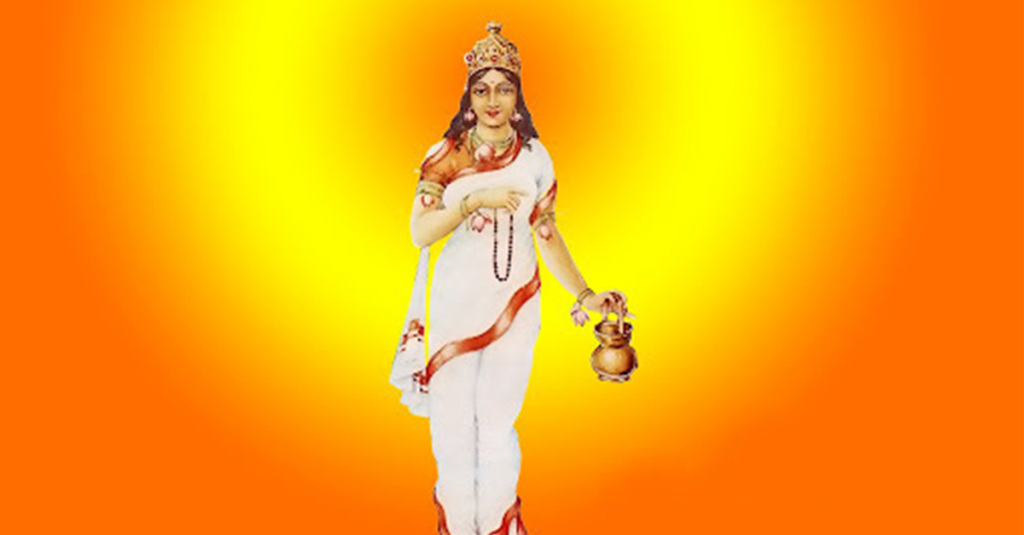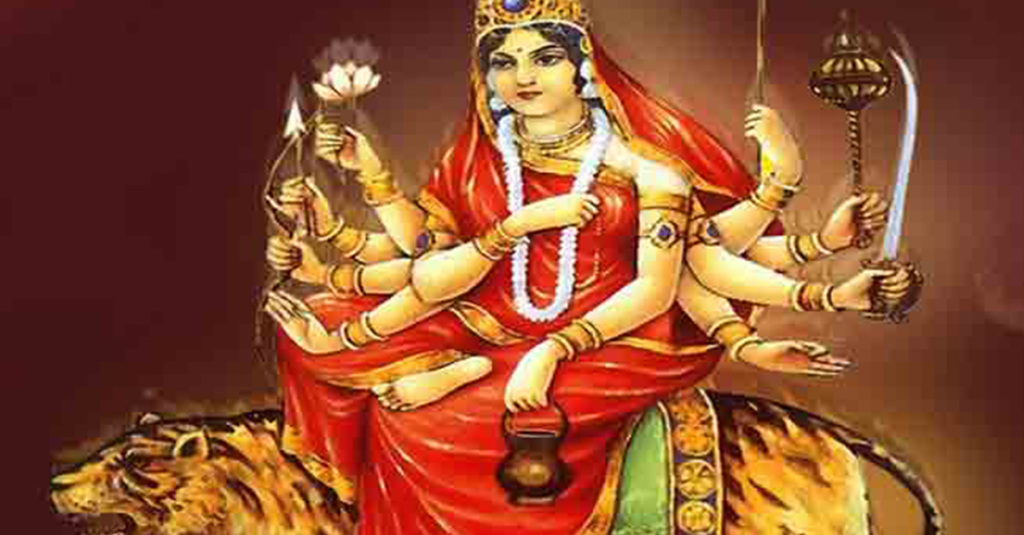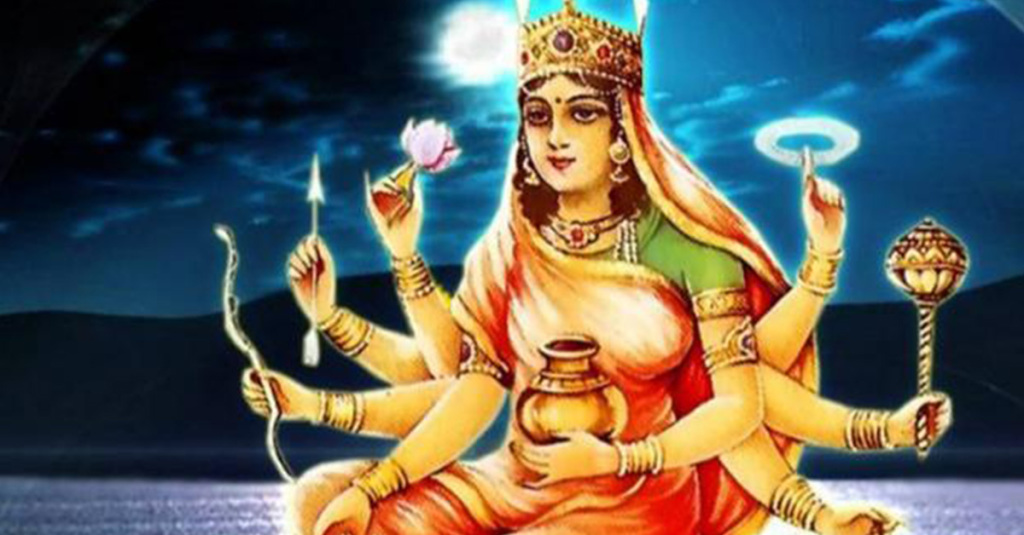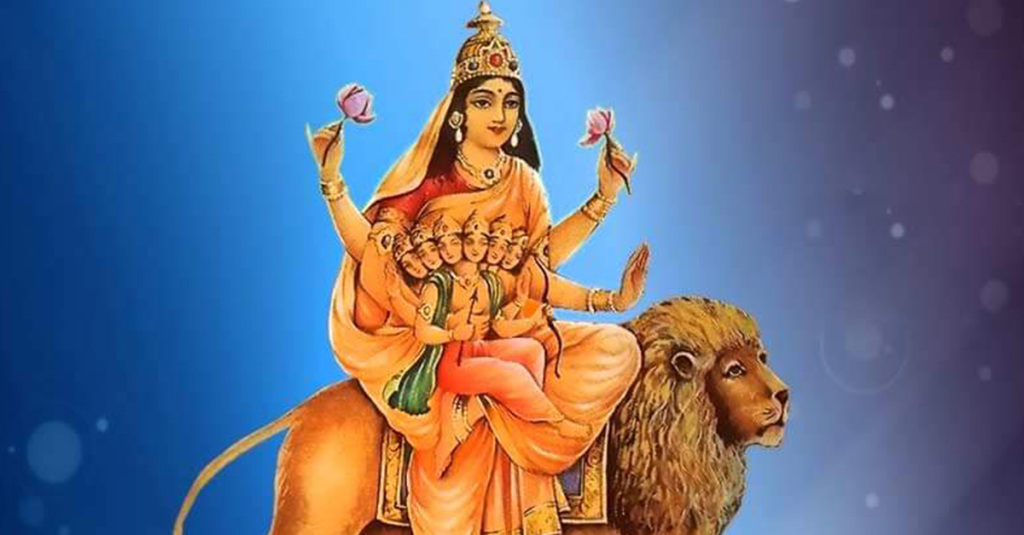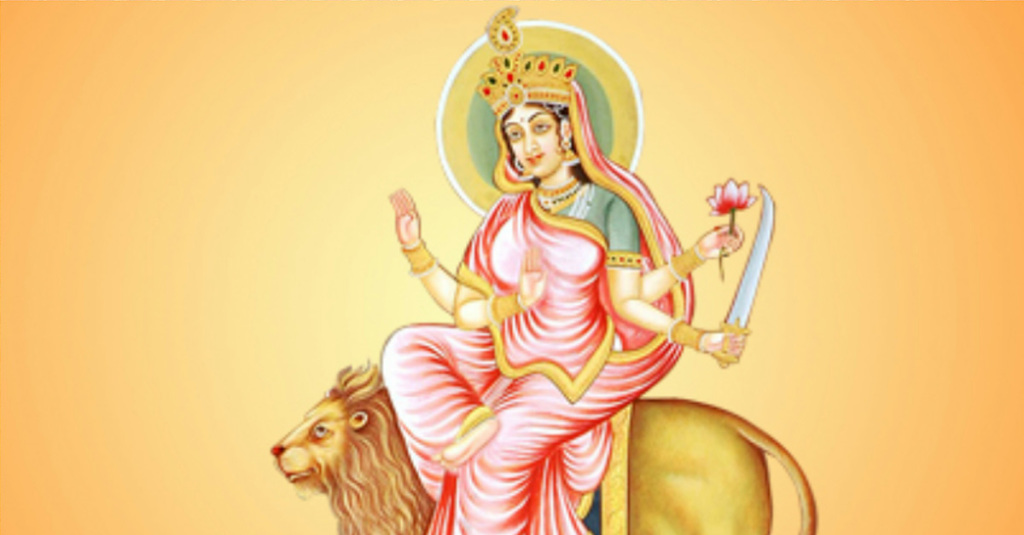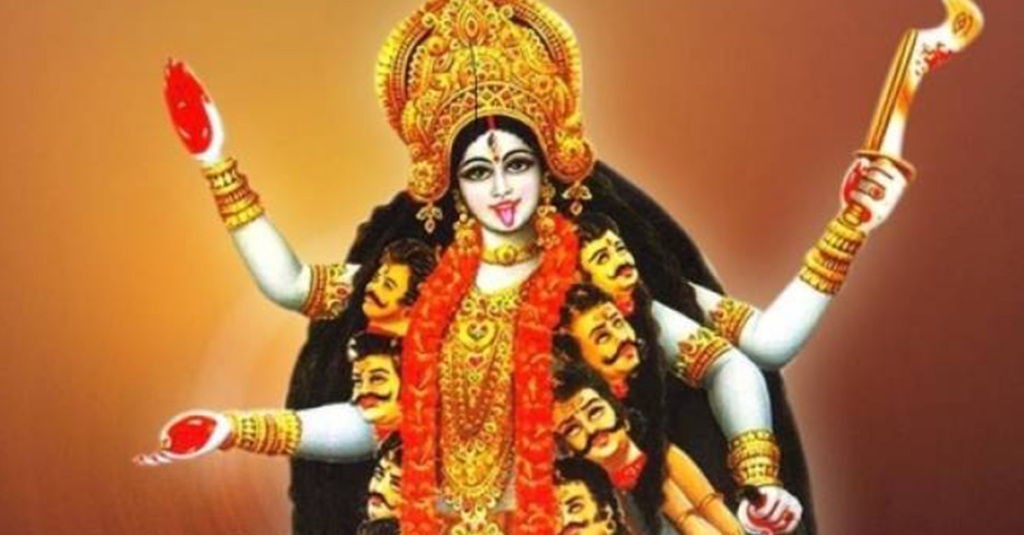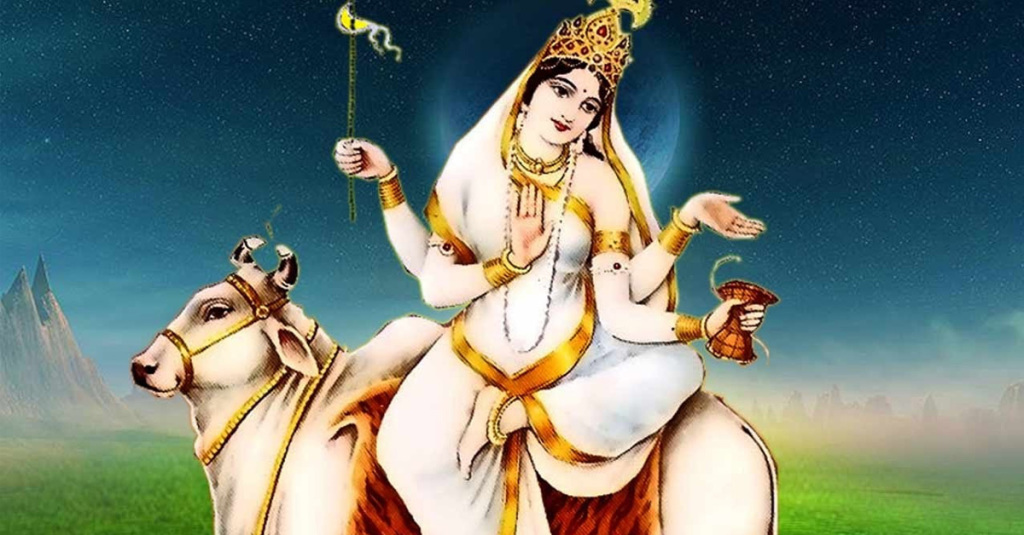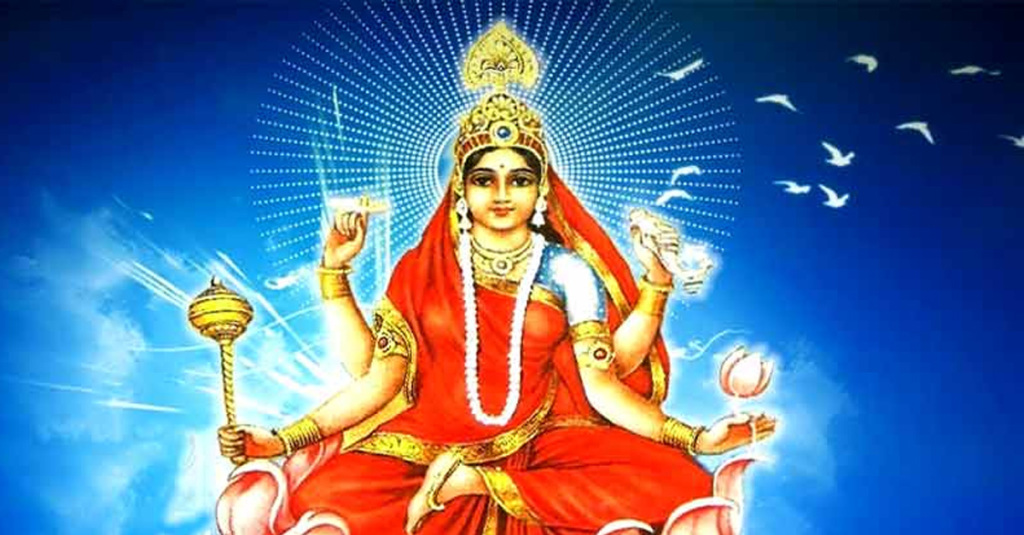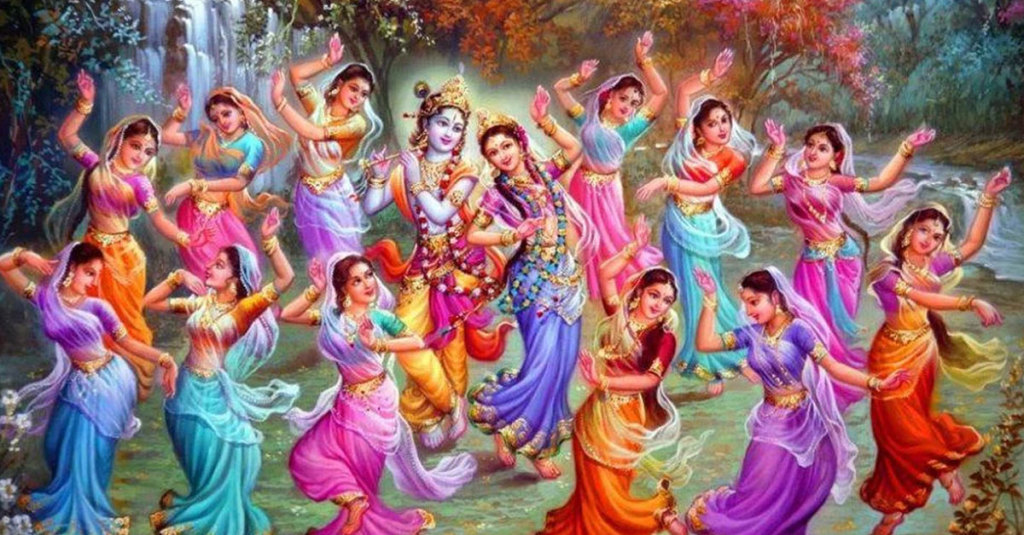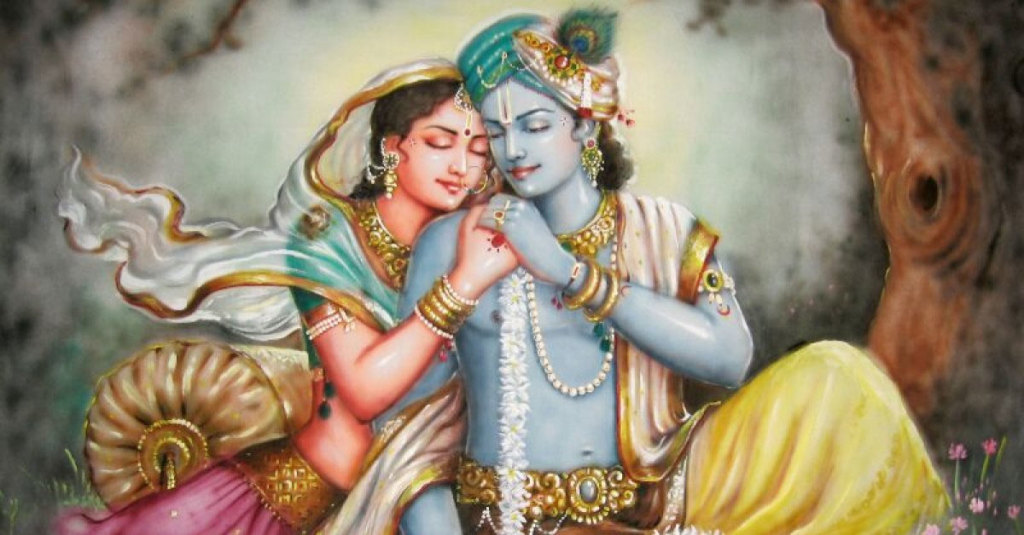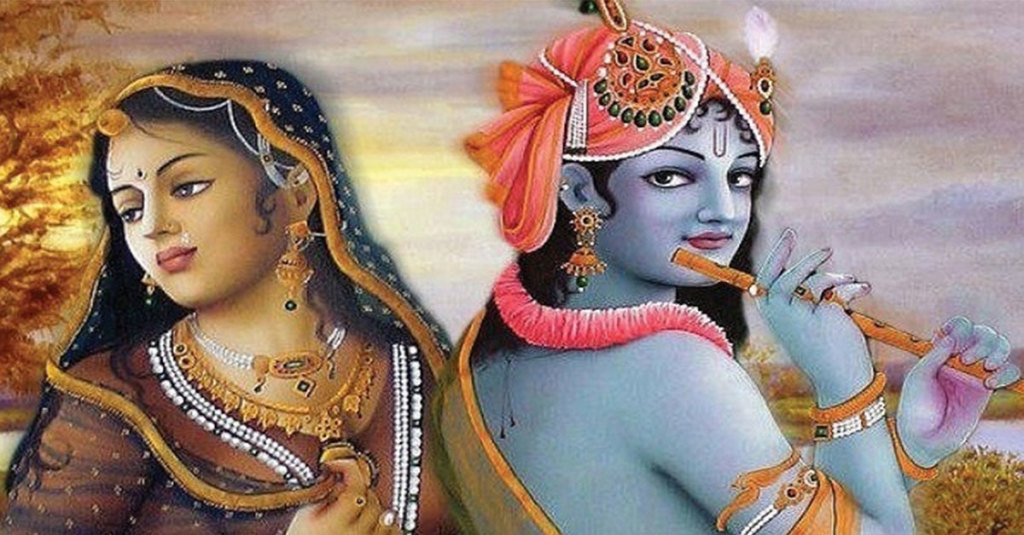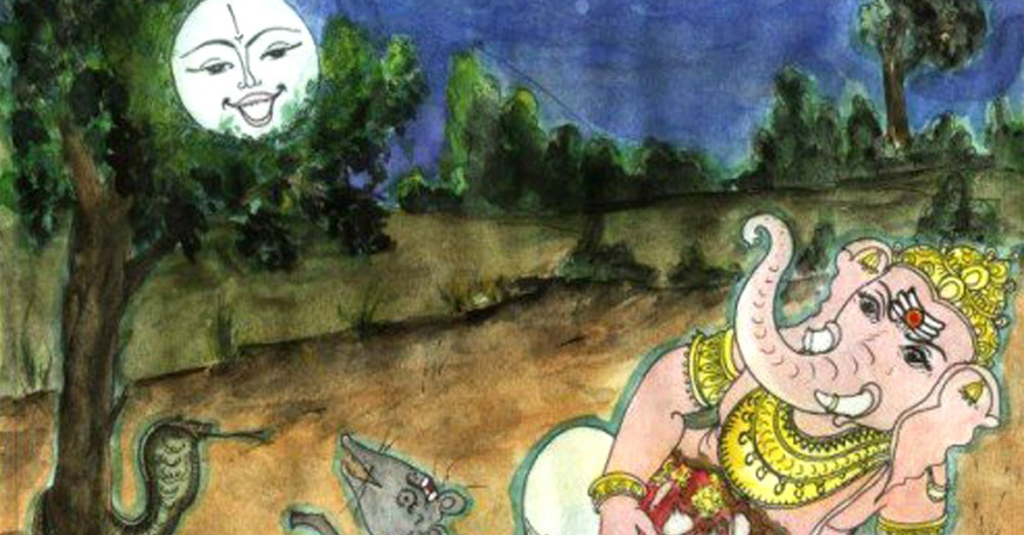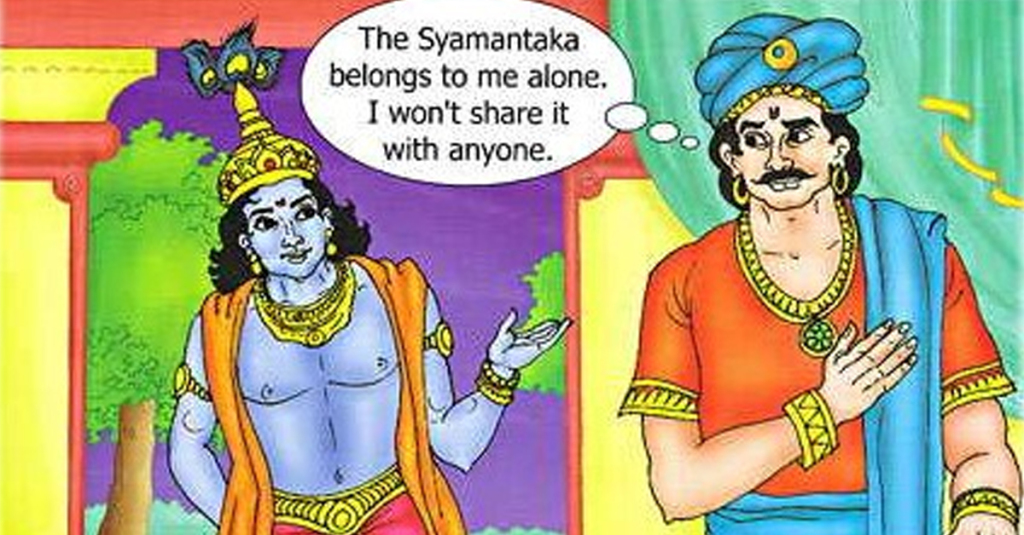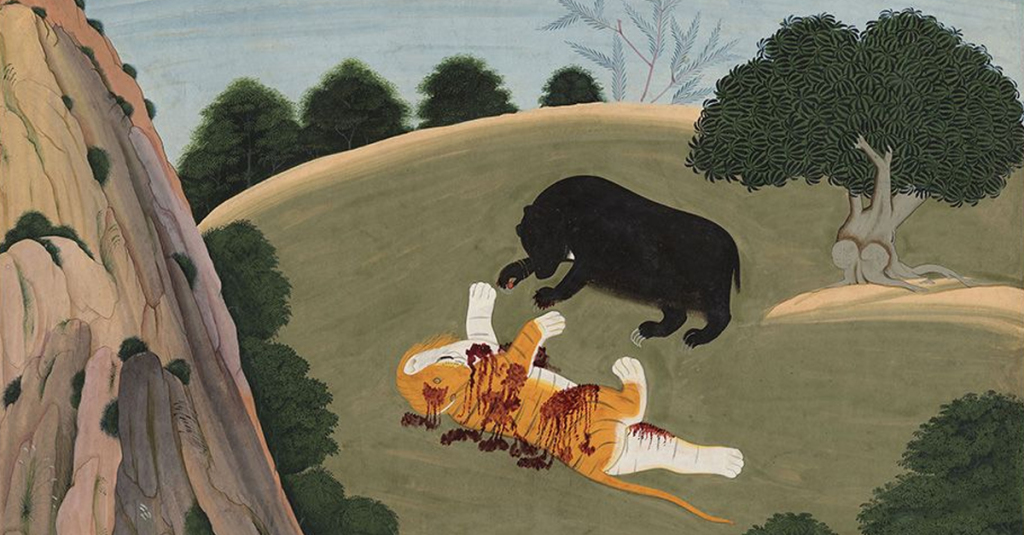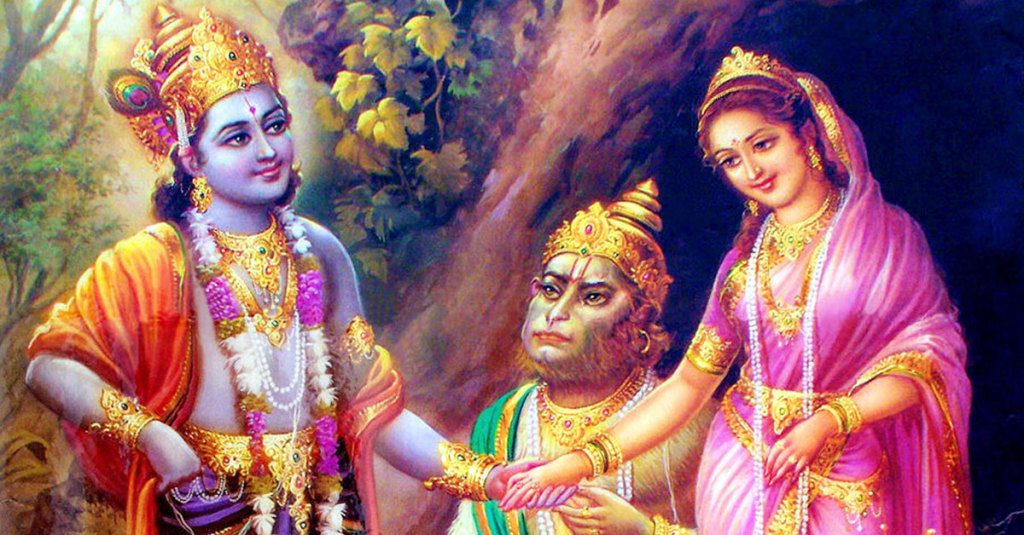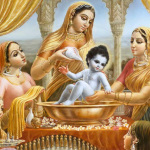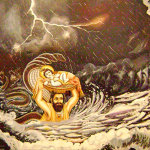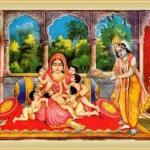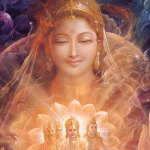Kansa: The despotic ruler of Mathura (I)
In the previous blog, we discussed the background of the birth of Lord Krishna. In this blog, we begin with the actual story. And the story begins with King Kansa, who was infamously known as the despotic ruler of the kingdom of Mathura.
Mathura, before Kansa came into power, had a very benevolent King and Queen. King Ugrasena and Queen Padmavati were ideal rulers. Things went wrong when once Queen Padmavati was tricked by a powerful wandering Gandharva into thinking that he was her husband, Ugrasena. By the time Padmavati realized that she had been tricked, she had already conceived. The child born to her was thus half human and half gandharva, a reincarnation of the demon Kalanemi, who had been vanquished by Vishnu himself in another lifetime.
Kansa proved to be a very capable commander under Ugrasena. When he stormed the Magadhan territory with his army, the Magadh King, Jarasandha, was so impressed with him that he offered his daughters, Asti and Prapti, in marriage to him. However, Kansa and Jarasandha were doing more than just establishing familial ties; they were also forging a mutually beneficial alliance. On the day of the marriage, Jarasandha arrived in Mathura with the entire Magadhan army, a move that was unexpected and definitely not required in royal marriage proceedings.
The intent behind this became clear when Jarasandha and Kansa cornered Ugrasena inside the castle premises and stated to him that they thought that it was time for him to retire as King and pass on the throne to Kansa. When Ugrasena refused and said that Kansa must wait for the appropriate time, he was threatened with mass destruction of the Kingdom and its people; both the armies stationed outside were just awaiting orders from their commanders.
Hence Ugrasena, seeing no other way out, and fearing for the lives of innocent people, gave up the crown to Kansa. Soon after, Kansa announced his coronation ceremony to the people of Mathura. Kansa was no Ugrasena, and the people suffered from the beginning under his despotic rule. But even a tyrant has a soft corner for at least one person. Kansa loved his cousin sister Devaki very much, and eventually, Devaki became his Achilles’ ankle.
In the next blog, we shall look at the union of Devaki and Vasudev and why Kansa, who had arranged the marriage himself, wanted to kill Devaki.
Janmashtami: The saga of the birth of Lord Krishna
There is a beginning and an end to every story and the story of Lord Krishna is perhaps one of the greatest you will ever come across. Janmashtami is soon approaching, and we at Krishna Bhumi, felt like this was the ideal time to delve into this mesmerizing tale. But when talking of Janmashtami, we immediately jump to the night that Nanda Gopal was born. But that is the end of the tale; wouldn’t you like to know where it all began? In this series of blogs, we take you back right to the beginning, all you have to do is read…
Part 1: How it all began…
Long ago, in the era of Svayambhuva Manu, Lord Brahma instructed Prajapati Sutapa and his wife Prsni to generate offspring in order to populate the material world. While performing her duties though, Prsni always had Lord Vishnu in her mind. 12,000 years, the both of them performed their duties and for 12,000 years, the Lord was always in Prsni’s thoughts. One fine day, pleased with such devotion, the Lord appeared before the couple and asked them what boon they wanted.
Prsni expressed her desire to be a mother to him and her wish was granted. She was told that thrice would she and her husband be parents to him. Soon after, Prsni was pregnant, and 9 months later she gave birth to the Lord in the form of a son. This son was named Prsnigarbha. This was in the Satya Yuga. In the Treta Yuga, Prajapati Sutapa and Prsni were reincarnated as Kasyapa Muni and Aditi and drawn together by divine machinations; Lord Vishnu took birth as their son, Upendra. Being of dwarf form in that birth, he was more popularly known as Vamanadeva.
Finally in Dwapar Yuga, the Earth deity, Bhudevi, tired of the planet being ruled impiously because of many asuras, who had taken birth in human form, in powerful Kshatriya families, appealed to Lord Vishnu to take birth on Earth again and bring the situation under control. This is when Lord Vishnu declared that he will take birth in his original form in order to bring peace and order on Earth again. Prajapati Sutapa and Prsni, Vasudev and Devaki in this lifetime, would be the parents. And demigods were urged to take birth in various Yadu families to get things ready and provide support when needed.
Now that you know the background, in the next blog we shall delve into the lives of Kansa, Vasudev and Devaki. The parents who gave birth to Lord Krishna and the maternal uncle who wanted him dead as soon as he was born.
Maharasa Van
Paying homage to Lord Krishna, Radha Rani and the Gopis, in the form of a ‘Raas Leela Sthali’
The proposal submitted by ‘The Vrindavan Bangar Gram Sabha’, for a Maharasa Van Pariyojna in Vrindavan, has been approved by the U.P government. As Vrindavan too moves ahead with the rest of the country, there must be some areas that keep the ancient culture and traditions alive. This is exactly what the Gram Sabha members are hoping to achieve with the restoration and preservation of this Raas Leela Sthali.
35 hectares of land have been demarcated for this project, between Jagannath Ghat and Pani Ghat, on the Parikrama Marg. Encroachment removal and ground levelling work has already been started. Very soon this area will be lush and green with various kinds of trees. Brajwasis, people from NGO’s or governmental agencies are all welcome to volunteer when the tree plantation drive starts.
The idea is to boost the tourism in Vrindavan, to offer a glimpse of ancient Vrindavan to pilgrims and to hold religious events like Kumbh Mela in these premises.
NAVRATRI: SIGNIFICANCE OF ALL NINE DAYS
Navratri marks the beginning of nine holy days, the worship of Goddess Durga, celebrating the victory of good over evil, Ma Durga’s victory over Mahishasura. Navratri means nine nights because in Sanskrit ‘Nav’ signifies nine and ‘Ratri’ means night. The festival is celebrated across India with great show and fervour, including Vrindavan. The nine-day festival commenced October 10 and will end on October 18 this year, and is dedicated to Parvati in all her nine avatars. Symbolising the triumph of dharma over adharma, Navratri holds a special significance in India.
Significance of All Nine Days
Day 1: Devi Shailaputri
On the first day of Navratri, Parvati’s incarnation, Shailaputri is worshipped. And this avatar of Durga signifies the concerted power of Brahma, Vishnu, and Maheshwar. The devotees worship her as the consort of Mahadev. On this day, Durga’s embodiment signifies nature and purity.
Day 2: Devi Brahmacharini
The second avatar of Parvati, Brahmacharini, is worshipped on day two of Navratri. On this auspicious day, Ma Durga looks blissful, blessing all her devotees with happiness, peace, refinement, and prosperity.
Day 3: Devi Chandraghanta
On day three of this festival, Ma Chandraghanta is worshipped, signifying courage and bravery. This incarnation of Parvati rides a tigress, representing beauty and grace. Ma Durga bhakts worship her for peace and prosperity in life.
Day 4: Devi Kushmanda
The fourth day of Navratri is celebrated in honour of goddess Kushmanda, an embodiment of Parvati and perceived as the creator of our universe.
Day 5: Devi Skand Mata
Goddess Skand Mata is worshiped on the fifth day of Navratri. According to Hindu mythology, Skanda is the mother of Karthikeya. The gods chose Devi Skanda to become the chief warrior to fight the demons. The goddess signifies the courage and valour of a mother, who can fight any evil when it comes to the protection and safety of her child.
Day 6: Devi Katyayani
The sixth day of Navratri is celebrated in the honour of Mata Katyayani, who took on Mahishasura. She appears as a warrior on this auspicious day, symbolising courage.
Day 7: Devi Kalratri
Goddess Kalratri is worshipped on the seventh day of Navratri. Ma Durga appears in her fiercest form with a dark complexion and disheveled hair. As the incarnation of Durga, Devi Kalratri defeated many demons in a battle against Mahishasura.
Day 8: Devi Maha Gauri
On this day, goddess Maha Gauri is worshipped in her eighth avatar, representing peace, intelligence, and prosperity.
Day 9: Devi Siddhidatri
The final day of Navratri is celebrated in the honour of Siddhidatri, who is believed to have healing powers. On this day, the goddess appears in an idyllic state of mind, just as the blue sky on a clear, bright day. On this day, Devi Siddhidatri sits on a beautiful lotus flower and rides a lion.
People celebrate Navratri in the holy Braj and other parts of India by observing fasts and dressing up beautifully in bright colours. The festival is celebrated in the holy town with much grandeur and fanfare. Durga bhakts offer pujas and prayers to please the nine forms of the goddess. You can be a part of Navratri celebrations through a Krishna Bhumi Holydays membership and spend seven days every year in Vrindavan.
Radhe Radhe!
ESSENTIAL LIFE LESSONS TO LEARN FROM RADHA-KRISHNA LOVE STORY
The love story of Radha and Krishna is perpetual and awe-inspiring, a symbol of the divine union between Paratmatma and Jivatma, the universal self and the individual self. The tale of Shyamsundar and Radhika is a beautiful legend celebrated across thousands of years. And Krishna devotees across many generations are still fascinated by Radha-Krishna romance. In fact, the names of Radha and Krishna are always spelt out in one breath, implying without Radha, Krishna is not complete and without Shyamsundar, Radha is incomplete. So, here are some life lessons to learn from the love story of this divine couple:
Showing Unending Devotion
Radhika, Goddess Shakti’s avatar, was an ardent devotee of Devakinandan, and when the Lord played His flute in the beautiful forests of Vrindavan on a full moon night, the gopis listened to the tunes emanating from Krishna’s flute. Radhika, on the contrary, used to be so mesmerised that she would forget everything and start dancing around natkhat Krishna. So, if you truly love your partner, you will be completely devoted just as Krishna Priya (another name of Radha) was devoted to Devakinandan.
Deriving Strength from Your True Love
Krishna was the eighth avatar of Lord Vishnu and derived all His strength from Radhika. There were many cow-herding maidens in Vrindavan, who desired the love and company of Shri Krishna, but it was Radha to whom Shyamsundar lost His heart. Though Krishna never married Radhika, she was by the Lord’s side during His entire stay in the holy Braj. Thus, their love story remains eternal. It means that we must completely trust our partners through thick and thin, making them our strength and not weakness.
Willing to Sacrifice
Pure love is one that is always unconditional. Love in the true sense of the word means sacrifice; it does not always mean not getting but also letting go. Radhika always knew in her heart that Krishna would never marry her. However, that did not make any difference to their undying love for each other. Their love was spiritual, on a sacred level, and beyond the understanding of the materialistic world and its limitations. True love is about sacrifice and Shyamsundar’s paramour relationships are of the highest spiritual excellence, and therefore Radha-Krishna’s love for each other should never be perceived from the physical parlance. Their love is indeed divine and supreme when construed as a form of sacrifice and dedication through which Radhika approached Shyamsundar, the universal self.
The Radha-Krishna romance can never be explained from any worldly or materialistic perspective. Radhika’s devotion for the Lord is unparalleled, proclaiming the ultimate union between the human soul and the Supreme Godhead. The eternal love between Krishna and Radha is beyond human cognizance.
Wouldn’t it be wonderful to live in the place where Krishna spent the blissful years of His life with Radharani? A home in Krishna Bhumi gives you just that. Live blessed surrounded by lush greenery and a beautiful environment where you can feel the Lord’s blessings each moment of your life. Alternatively, you could also visit Vrindavan whenever you wish to through a Krishnabhumi Holydays membership.
Radhe Radhe!
SHRI KRISHNA AND LORD GANESHA CONNECTION: THE LESSER KNOWN STORY
Now that Janmashtami is over, Ganesh Chaturthi, one of the popular festivals in India, is being celebrated with much pageantry, dedication, and fervour. Lord Ganesha, who is perceived as the elephant head God symbolises good fortune, wisdom, and prosperity. Ganesh Chaturthi is celebrated in different parts of our country including Vrindavan, the land of Shri Krishna, where pandals are built throughout the holy town. There is a strong connection between Devakinandan and Lord Ganesha, according to the Hindu mythology. There is a popular belief that you should not look at the moon on the auspicious day of Ganesh Chaturthi. Else, false accusations and criticism would come one’s way. However, according to the puranas, it is written that even if an individual gets a glimpse of the moon by mistake, he or she can invalidate the curse by learning about the story associated with Ganesh Chaturthi.
Ganesha’s Curse on Shri Krishna
There is an interesting story related to Ganesh Chaturthi and its significance. With all the Gods worshipping Lord Ganesha, Kuber, one of the wealthiest inhabitants of paradise organised a grand feast for Ganesha. The happy and cheerful elephant-head God ate all the delicious food to his heart’s content. However, he soon felt uneasy and sensed that due to overeating, his stomach would burst. His belly grew very large and with its round shape and Ganesha’s short build, the Lord was unable to bend. The moon observed Ganesha’s plight from the sky above and laughed at him. Thus ridiculed, Lord Ganesha lost his cool and cursed the moon. The curse was so strong and forceful that even Shri Krishna could not escape Ganesha’s wrath.
Once upon a time in Dwaraka, Shri Krishna’s homeland, lived the king Satrajita, who was also an ardent follower of the Sun God, Surya. As the mighty king worshipped with much devotion, Satrajita was gifted a brilliant and powerful gem called the Syamantaka. It was thought that whoever worshipped this gem with all his heart would be rewarded with lots of gold in return, which signified abundant wealth and prosperity. One fine day, Devakinandan wanted to take a look at this magnificent gem, but was never allowed by Satrajita to see the same.
On the fourth day of the moon, Rukmini, Devakinandan’s wife, served the Lord some kheer. While Shri Krishna was savouring the delicious pudding, He saw the reflection of the semi-circular moon, cursed by Ganesha. On seeing the crescent moon, Lord Krishna realised that He too will have to face Ganesha’s curse.
Prasena’s Hunting Adventure
During this time, Prasena, the brother of king Satrajita, goes on a hunting trip, carrying the powerful Syamantaka gem with him. Unfortunately, Prasena was attacked and killed by a lion, mistaking the glittering gem as fresh meat and took the precious jewel into the cave.
Jambavanta Kills the Lion
Jambavanta, the bear who rescued Sita, Lord Rama’s wife, slaughtered the lion and handed over the gem to Jambavanti, his daughter. When Satrajita learned about his brother’s death, his suspicion fell upon Krishna. The king thought that Devakinandan killed Prasena in greed of the powerful gem. Hearing of these allegations, Shri Krishna was extremely sad and filled with remorse. Therefore, He went to look for Prasena Himself, king Satrajita’s brother, and discovered his corpse outside the lion’s cave.
Krishna Battles with Jambavanta
Lord Krishna followed the lion’s footprints and entered the cave. This is where He found Jambavanti with the gem. Jambavanta thought that Devakinandan wanted to attack his daughter, for the magnificent Syamantaka, and asked Krishna to fight with him. The battle continued for 28 long days and Jambavanta failed to compete with Devakinandan, who was a trained warrior. After which he realised that Shyamsundar was no ordinary person and requested Him to disclose His real identity.
Krishna Weds Jambavanti
Revealing His true identity, Krishna reminded Jambavanta that He was born as Lord Rama in His preceding life and how Jambavanta helped Rama to rescue Sita. When Jambavanta realised what a blunder he had committed, he gave his daughter and the precious Syamantaka gem to thank Krishna. After His marriage, Devakinandan went to visit king Satrajita and returned Prasena’s corpse and the gem. Satrajita feeling sorry begged for Krishna’s apology and asked the Lord to marry Satyabhama’s, the king’s daughter and requested Devakinandan to protect the precious gem Syamantaka.
Krishna Starts Worshipping Ganesha
According to the Hindu mythology, people believe that Krishna had to bear Ganesha’s curse and thus faced these allegations. From that day, Devakinandan started to worship Lord Ganesha.
The holy Braj celebrates not only celebrates Ganesh Chaturthi, but also many other festivals. So, come and experience the magic called Vrindavan, where you get to hear many beautiful stories related to the Supreme Godhead, Krishna. You can explore this magical land through a Krishnabhumi Holydays membership and also own one of the luxurious apartments in Krishna Bhumi, the temple township in Vrindavan.
Radhe Radhe!
